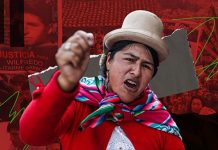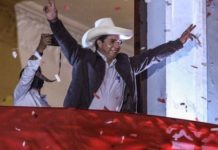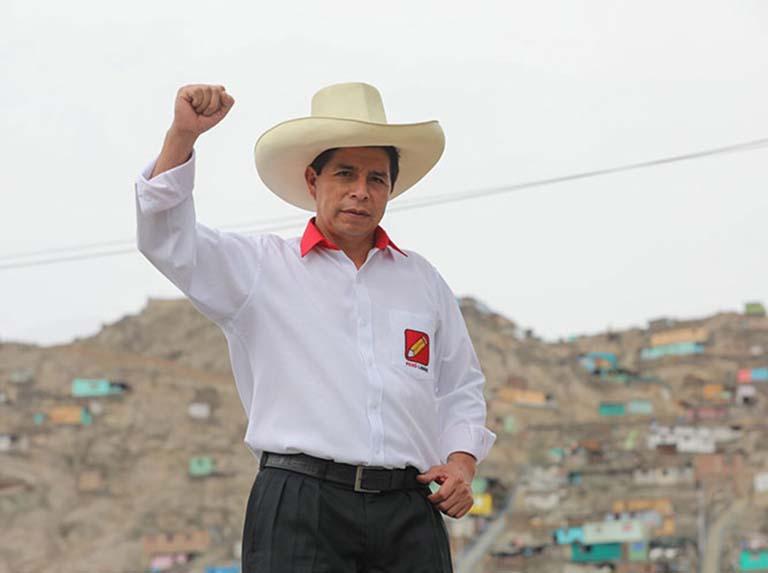
Will the U.S. pull any dirty tricks to help his jail-bird rival, the daughter of disgraced president Alberto Fujimori?
[Peru held its general election on April 11. A socialist-oriented farmer-teacher, Pedro Castillo Terrones, led 17 other candidates. He stands a fair chance of winning the run-off on June 6. This background piece includes the election campaign, decades of political conflicts and rampant corruption, U.S. involvement, as well as guerrilla warfare before and during Alberto Fujimori’s murderous, authoritarian and corrupt reign. Fujimori is in prison for many crimes. His loyal daughter, Keiko Fujimori, campaigns while temporarily under “house arrest” from her pre-trial prison cell. She is charged with money laundering and receiving bribes, and is the right wing’s hope. The criminal’s challenger is a man of the people. The winner takes charge on July 28.—Editors]
Pedro Castillo Terrones, 51, a rural schoolteacher and peasant farmer surprisingly led the race of 18 candidates on election day, April 11. The leftist candidate for the Peru Libre (Free Peru) party obtained 19% of the votes. His party’s logo is the teacher’s pencil.

Coming in second place for the June 6 run-off was Keiko Fujimori, 46, with 13.36%. She was one of many rightest candidates. She ran on the Fuerza Popular (Popular Force) party, which she founded in 2011 as a successor to her father’s party. Alberto Fujimori ruled between 1990 and 2000.
Fujimori’s daughter has remained faithful to her father throughout his presidency and in prison. During Alberto Fujimori’s reign, he ordered death squads to massacre peasant opponents to his dictatorial rule. Charged with 51 crimes, Fujimori received a 25-year sentence for crimes against humanity and corruption, which he began serving in 2009.
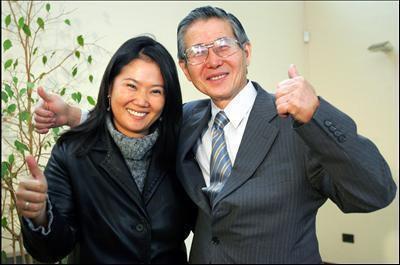
Although this election had more presidential candidates than ever, 28% of voters did not want any of them, according to a poll by the Institute of Peruvian Studies. Seventy percent of the 25,193,971 registered voters cast ballots. In the 2016 presidential election, nearly 82% voted.
Peru has 33 million people, 60% of whom are considered mestizos (Indigenous-Spanish mix), 26% are indigenous (15% Quechua descendants of Incas, along with several other original peoples, including half-a-million Aymaras); six percent white; four percent black; and several thousand of Chinese, Japanese, Arab descent and others.
Peru Libre won 37 seats in the 130-member legislature with 14% of the votes.

Fuerza Popular won 24 seats with 11% of the votes, down from 37 in 2011 elections, and from an absolute majority of 73 seats in 2016.
Closest runners-up were Rafael López Aliaga, rightest candidate for Renovación Popular (Popular Renewal) 11.7% with 13 congressional seats, and Hernando de Soto, rightist candidate for Avanza Pais (Go On Country) 11.6% with seven congressional seats. López is a super conservative millionaire made rich during the Fujimori dictatorship through monopoly trade concessions; both supported Alberto Fujimori and now support his daughter.
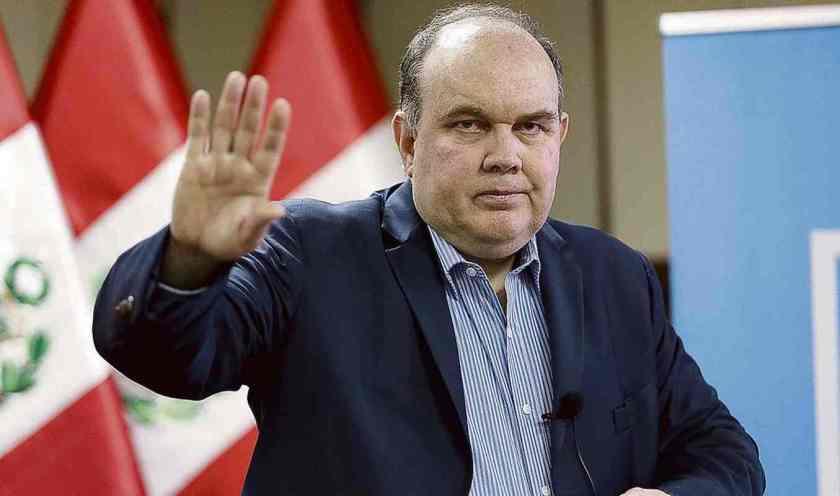
Rafael López Aliaga [Source: sandiegouniontribune.com] 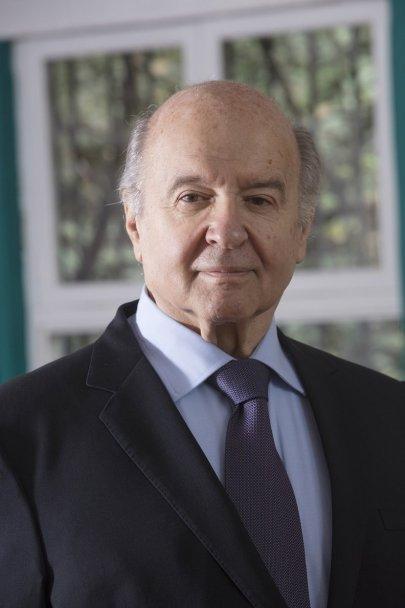
Hernando de Soto [Source: wikipedia.org]
Yonhy Leccano, centrist-liberal of Action Popular (Popular Action) party, received 9% for president and won 16 congressional seats. Veronika Mendoza, leftist candidate for party Juntos (Together for Peru) garnered 7.8% for president and won four congressional seats.
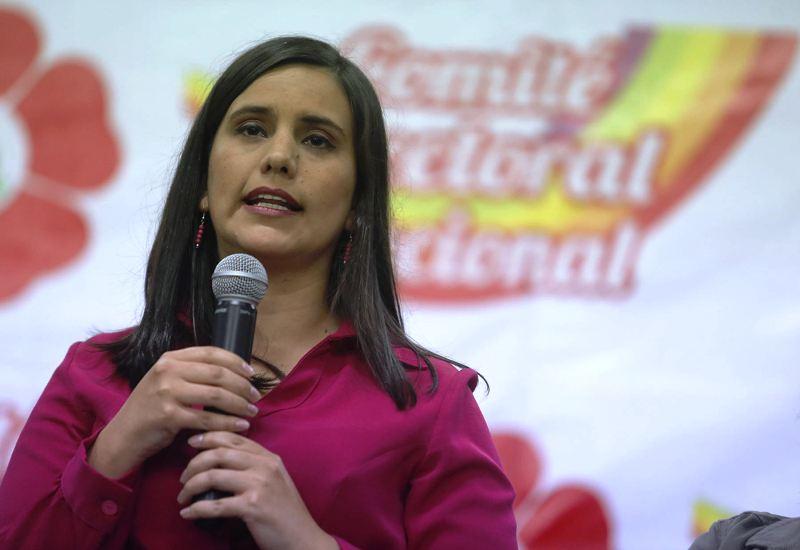
Besides Castillo and Mendoza, the only other left candidate, Marco Arana of El Frente Amplio (Broad Front) party, came in 16th with only 65,000 votes, 0.5%. The party will not be represented in Congress.
Broad Front is a coalition of grassroots groups, and was aligned with Mendoza in the 2016-20 congressional period, but broke up into two factions. They will go with Castillo.
Gregory Wilpert interviewed Francesca Emanuele, a Peruvian political analyst, activist, and columnist for the independent medium Wayka—a Quechua term for “group work for the collective well being.” This online website has “millions of followers,” according to Emanuele.
She gave three reasons why Castillo came out in front of Mendoza, who is a better-known personality and was considered to be a favorite for first or second place in a run-off election.
“First, Veronica Mendoza was seen as a politician. She was actually running for the second time … she had been a congresswoman, [and] people in Peru are sick and tired of politicians … Pedro Castillo wasn’t seen as a politician. [Another reason] is that people who support, who voted for Castillo are people located in the Andes, in the center of the country. Even though Veronika Mendoza was born and raised in the Andes too, in Cuzco, she studied abroad. Her mother is from France. Veronica Mendoza has a very academic discourse, while Pedro Castillo created a sentiment of working-class people. His discourse is better; they understand him. Finally, there were many years when the academic groups and the mainstream media were constantly attacking Veronica Mendoza because she’s a leftist candidate.”[1]
Mendoza’s democratic socialist economic program would entail a decentralized planned economy albeit with “market socialism,” workers’ self-management as part of workplace democracy. She and her party, as well as Broad Front, stand for social equality for women, including the rights to abortion and same-sex marriage.
The media had not counted on Castillo having a chance. However, in the final days of the election, he rose in the polls despite the mass media’s depiction of him having links with MOVADEF (Movement for Amnesty and Fundamental Rights).[2]
Emanuele explains Castillo’s appeal to large sections of the population.
“Pedro Castillo is a schoolteacher, rural school-teacher. He’s a farmer, and he doesn’t identify himself as an indigenous. He doesn’t speak Kichwa [a Quechua dialect], but he definitely considers himself a peasant. Nobody in the history of the Peruvian republic [like him] has reached the second round. Nobody like him with so little economic resources. His campaign cost $8,000. So, this is a victory for Peruvian working-class people, for Peruvian people who were forgotten and neglected for many years…Castillo was known in 2017 when he was leading a teachers’ strike, and then we didn’t hear from him until now that he’s running for elections.
“Castillo is economically progressive but socially conservative. He proposes an economic model like that in Ecuador under Rafael Correa and Bolivia under Evo Morales. He proposes nationalizing strategic natural resources [and] reviewing the mining projects. He also proposes a new constitution that would replace the one approved under the Alberto Fujimori dictatorship. But [Castillo] has contradictions: economically progressive but socially conservative. He’s against abortion and gay marriage. He’s arguing against gender equality as an issue in the educational curriculum.
“Regarding the media attacking him about The Shining Path, there is some evidence that members of his party and including himself have some connections with the political branch of this Shining Path, which is called MOVADEF.”[3]
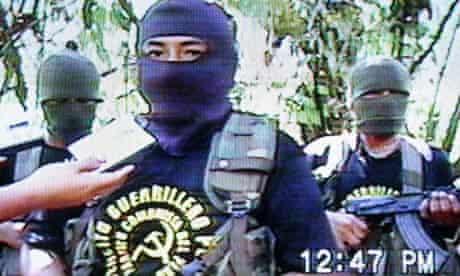
Pedro Castillo speaks of ending the “colonial relationship” still extant, especially through “free trade” agreements that extract huge profits without much benefit for the Peruvian people.
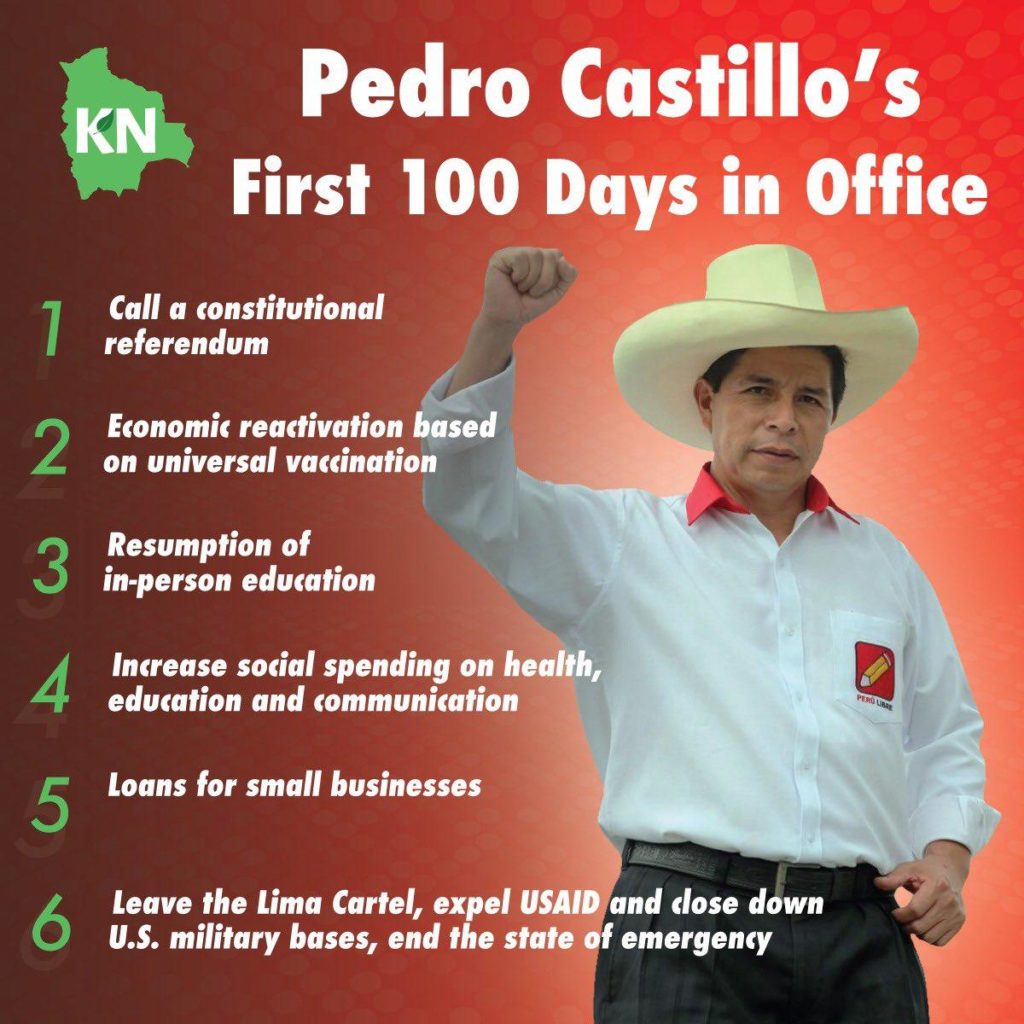
Keiko Fujimori is the business class’s “democratic option.” She promotes neo-liberalist policies and sees the United States as Peru’s strongest ally. Emanuelle compares Keiko with Brazil’s president, Jair Bolsonaro—“extremely right-wing and extremely populist.”[4] Indigenous peoples remember her as the loyal daughter of the president who forced 300,000 indigenous women and 20,000 indigenous men to be sterilized under the so-called “voluntary surgical contraception” program.
Keiko Fujimori’s net worth is estimated to be $1-5 million at the age of 44 years old. “She is one of the richest politicians who was born in Peru.” Left unmentioned in mainstream sources is her criminal involvement in money laundering and bribes she received for which she was imprisoned pending trial.
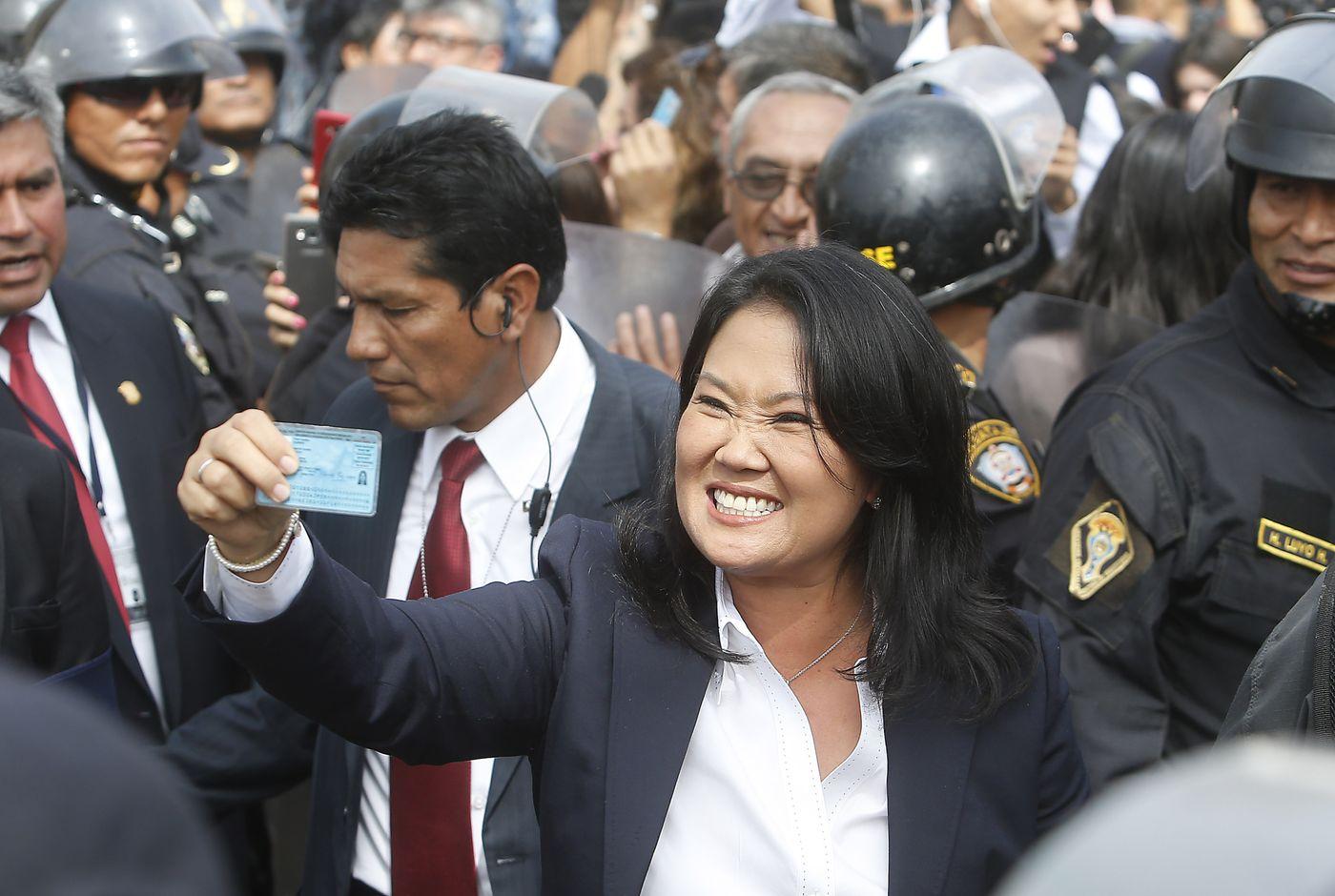
“The mass media and the other right-wing candidates in the first round are constantly attacking Castillo very aggressively,” political analyst-commentator Francesca Emanuele told CAM. She believes that the farmer-teacher will win but foresees a close finish.
Major Issues: Political Instability, Covid-19, Recession, Corruption, Immigration
In the last five years, there have been four presidents. Only one, Pedro Pablo Kuczynski, was actually elected. In 2015, he renounced his dual U.S. citizenship to run for the presidency. He narrowly beat Keiko Fujimori in June 2016.

Kuczynski resigned in March 2018 after two attempts to impeach him—first for taking monies illegally from the Brazilian Odebrecht construction company, then another corruption charge plus widespread discontent that he pardoned the mass murdering president, Fujimori, on December 24, 2017, for “humanitarian” reasons.
On October 3, 2018, the Supreme Court overturned the pardon, and Fujimori was returned to prison. Kuczynski was imprisoned in pre-trial detention in April 2019 for receiving bribes from Odebrecht. Later placed in house arrest due to health conditions, some of his property was seized bv the court.
Following Kuczynski’s resignation, the first vice president, Martín Vizcarra, replaced him. More independent than most in the legislature, he promoted reforms against corruption in the Congress and judiciary causing outrage among politicians and judges.
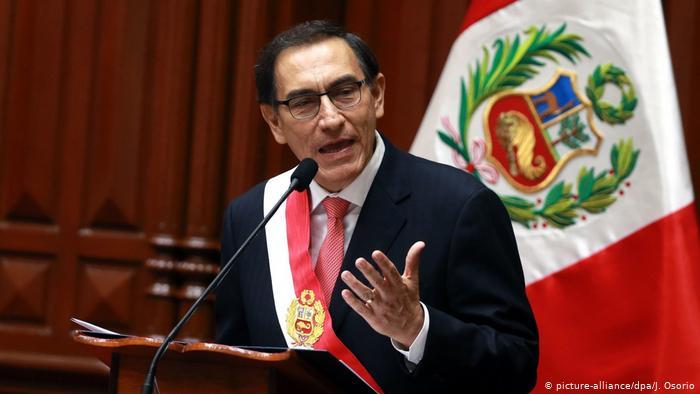
Peru is one of the worst affected nations in the Americas by the COVID-19 pandemic. Socioeconomic circumstances are a main cause of this. One-third of the population live in overcrowded homes; 70% of the work force have informal jobs with few or no benefits or tax payments; only half of households have refrigerators or freezers and many people must find/buy food on a daily basis.
The world’s second exporter of copper is experiencing a recession. Nevertheless, the ministry of economy reports that it expects a rebound with five percent growth rate between this year and 2026.
Due to a second wave of corona infections by January 2021, intensive bed occupancy rose to 90%. Medical workers struck due to harsh work conditions.
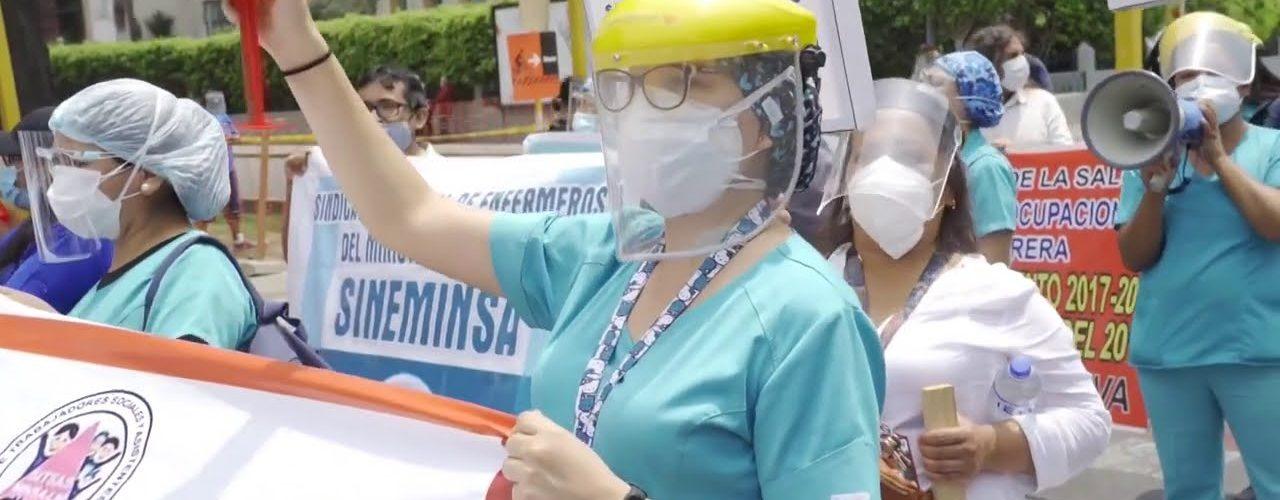
President Vizcarra instituted stay-at-home orders. He provided relief funds. GDP fell 30%. Massive inequality, an inadequate health-care system, and corruption in the health ministry in applying vaccines has caused many deaths. Today, nearly two million inhabitants have been infected and 65,000 have died.
In September 2020 when Congress opened impeachment proceedings against Vizcarra on grounds of “moral incapacity,” accusing him of influence peddling, there were half-a-million infected with 25,000 deaths. Although there were insufficient votes to remove him from office, his reputation as an effective leader plummeted.
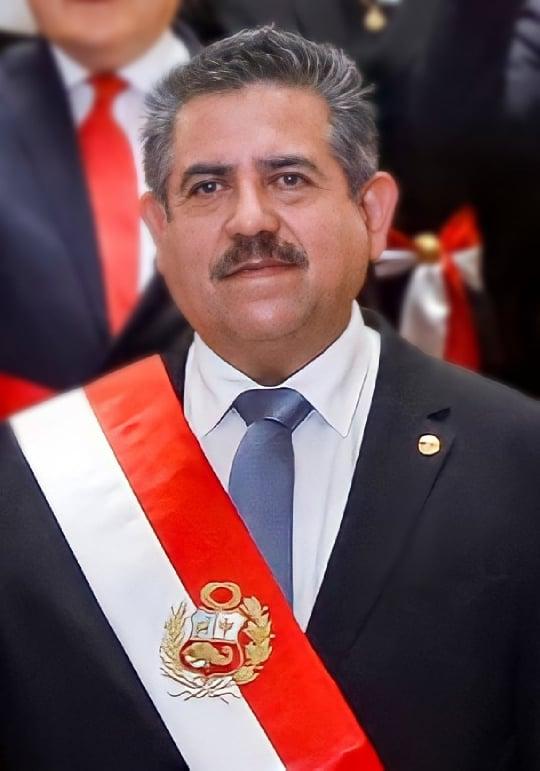
On November 9, 2020, Congress impeached Vizcarra a second time, declaring him “morally incompetent”. This time, he was removed from office. Some of those who voted against him had been targeted for their corruption.
Congress President Manuel Merino succeeded him. There is so much corruption—politicians are infamous for such—that many commentators and ordinary people believed charges against Vizcarra were trumped up.
Some media called the process yet another coup. These developments incited massive protests, and grew once policemen murdered two demonstrators. In further protests, police injured demonstrators and three dozen journalists, shooting some with shotgun pellets and tear gas.
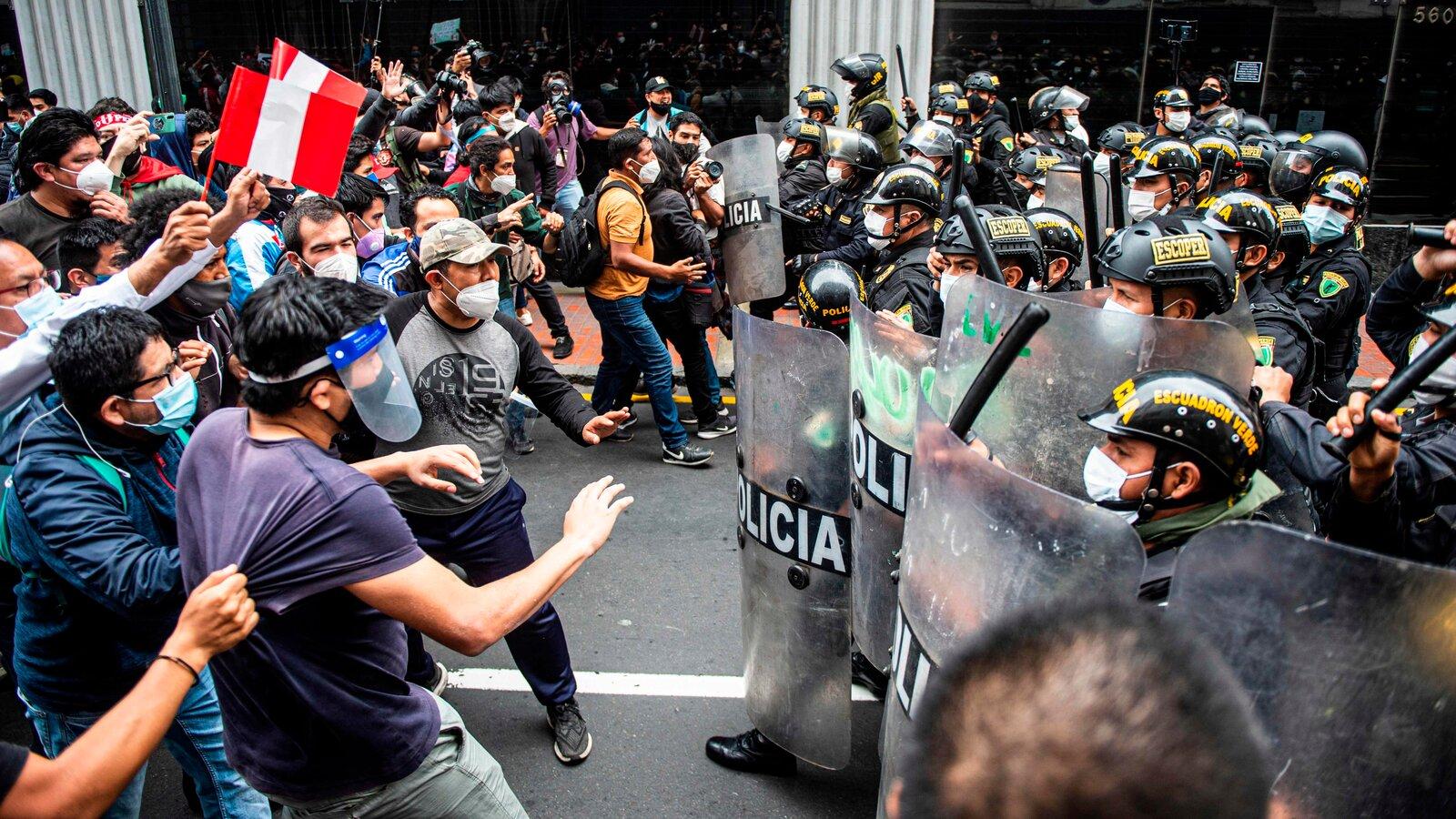
On the fifth day of Merino’s presidential tenure, he resigned. One of the few congressmen who voted against impeaching Vizcarra, Francisco Sagasti, was named president by a split legislature.
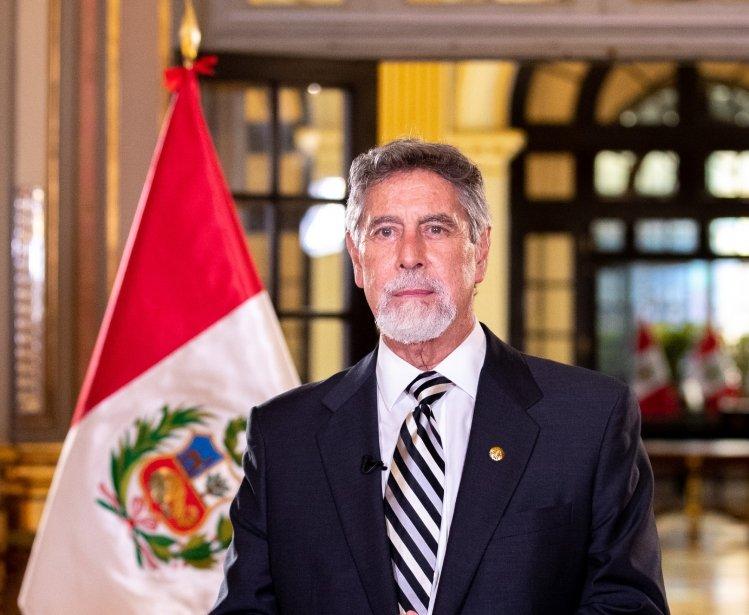
Sagasti had been chief of the World Bank’s strategic planning division. As such, the centrist promotes capitalist austerity policies. Sagasti leads the Morado Partido (Purple Party). He has concentrated on improving measures to combat Covid-19, publicly denounces corruption, and promotes education in the rural areas. The U.S. approves his policies.
The Purple Party nominated Julio Guzmán for the 2021 general elections with Sagasti as its 2nd VP. Guzmán received only 2.2% of the votes, but the party received enough congressional votes, 5.3%, to have four members in Congress.
Keiko Fujimori studied business administration in the United States where she lived off and on for many years. Upon returning to Peru, she worked with her father. She took over the position of first lady (1994-2000) once the president divorced his wife, Susana Higuchi. Keiko was in Congress from 2006 to 2011 when she ran for the presidency. She came in second then, as she did in 2016.
On October 31, 2018, Keiko was sentenced to 36 months preventive imprisonment for obstruction of a judicial investigation into money laundering and bribery with intent to change witness testimony. She was released to house arrest on January 11, 2019. She was later returned to prison. When hospitalized with Covid-19, she was again released to house arrest, and once recovered could campaign for the presidency.
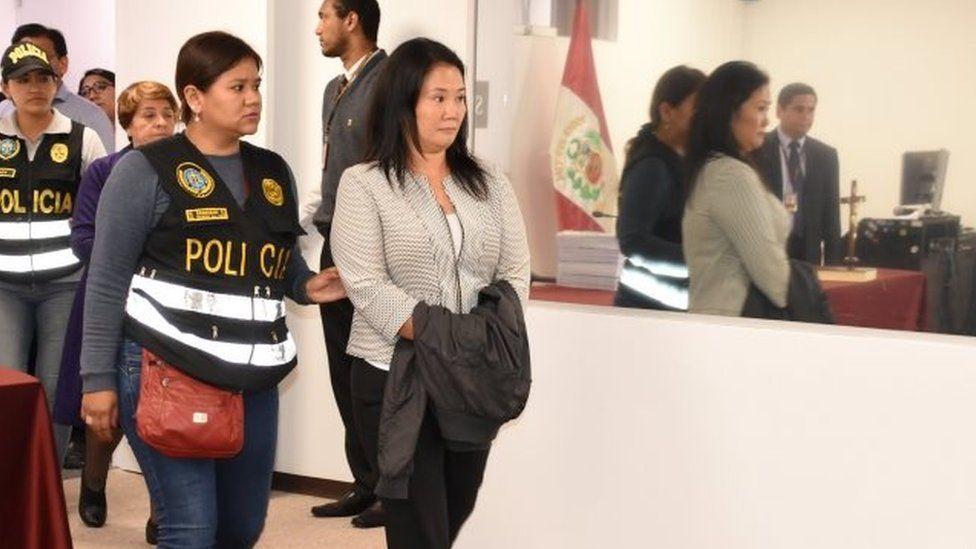
Public prosecutor José Domingo Pérez seeks a 30-year sentence for her accepting $1.2 million from the Odebrecht real estate/construction firm, which illegally financed her political party. An agreement was reached between Odebrecht and Peru’s Justice Ministry in 2019.
According to Wayku, Fuerza Popular congresswoman Martha Chávez is attempting to get the current parliament—largely conservative and rightest—to change that agreement to favor her presidential candidate. “Martha Chávez would have Odebrecht to stop confessing how Keiko received illicit money–Wayka.”
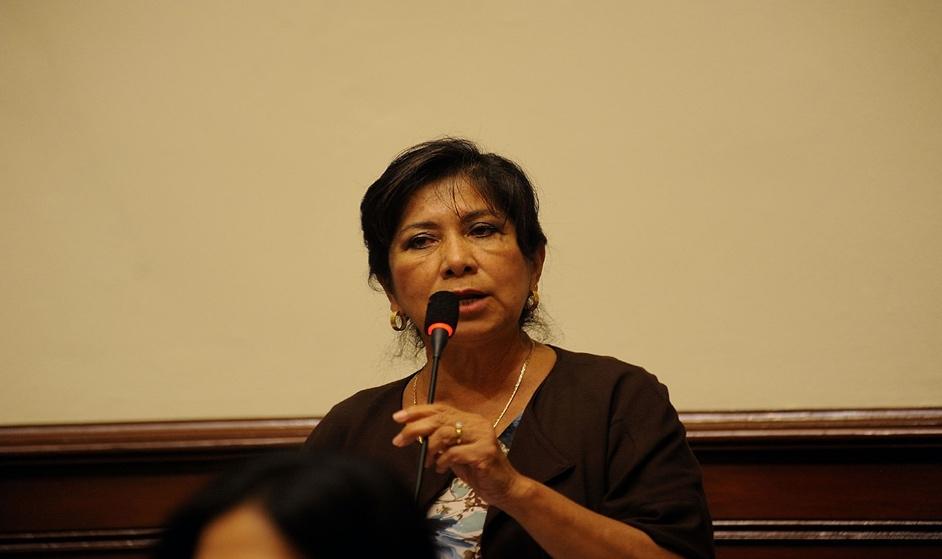
That agreement would allow Odebrecht to continue working in Peru with public works contracts once it turns over documents and testimonies that show how Keiko Fujimori and ex-presidents received money illegally that they were offered.
Immigration
On March 9, 2015, President Barack Obama declared Venezuela a threat to national security, and invoked the first of escalating sanctions against hundreds of Venezuelan companies, individuals, vessels and its oil.
Due mainly to increasingly severe sanctions under Trump’s regime, Venezuelans lack food, medicines and other necessities, even oil/petroleum to sustain bare minimum living standards. As such, since 2015, more than one million people flee annually to neighboring countries as refugees.
As a result of this crisis, Peru has over one million Venezuelan refugees. Peru’s armed forces joined with Ecuador’s, under the right-wing Lenin Moreno government, to prevent more migration by posting soldiers at their borders to Colombia.
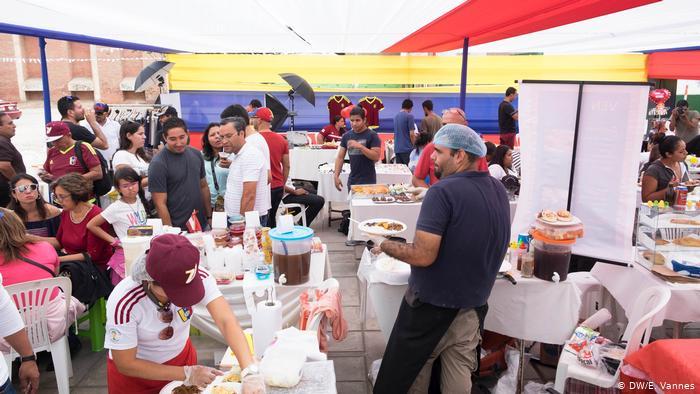
The refugee issue is divisive in Peru, as well as in other Latin American countries. The pro-capitalist parties support U.S.-backed Juan Guaidó, while socialist-oriented parties support the elected president, Nicolás Maduro. Many people worry that the U.S. will punish them if they back Maduro.
On January 23, 2019, the 35-year-old assemblyman simply announced he was taking over the presidency, on an interim basis, without any election. Guaidó had been elected to the 2015 Congress on the Voluntad Popular (Popular Will) ticket with 26% of the votes in the state of Vargas (350,000 population.)

Today, the U.S. sanctions all Venezuelan exports (92% is oil, most of the rest is gold), and most of its imports, as well as freezing its assets in U.S. and British banks. This aggression is compounded by the U.S. (and 70 of its allies) recognizing Guaídó as president of the country.
The U.S. and Great Britain recognize only Guaidó has “the right” to use Venezuela’s state funds that they have frozen. The assumption is that he will one day become president, by hook or crook, probably through a U.S.-backed military coup.
Guaidó has called for U.S. military intervention, and there have been a handful of clumsy coup attempts. Recent polls of Venezuelans living in the country showed only 4.1% consider him capable of ruling their nation.
Sendero Luminoso
“The Shining Path (Sendero Luminoso or SL) Maoist guerrillas were formed by [philosophy] university professor Abimael Guzmán in the late 1960s and were based upon Marxist ideology … He attracted many like-minded young academics to his cause of staging a radical revolution in Peru. He visited the People’s Republic of China in the mid-1960s and his collection of inchoate ideas was profoundly influenced by Maoist theories, which became the basis of the ideological foundations of the Shining Path,” wrote the Council on Hemispheric Affairs, a “progressive voice against U.S. illegal interventionism.”[5]
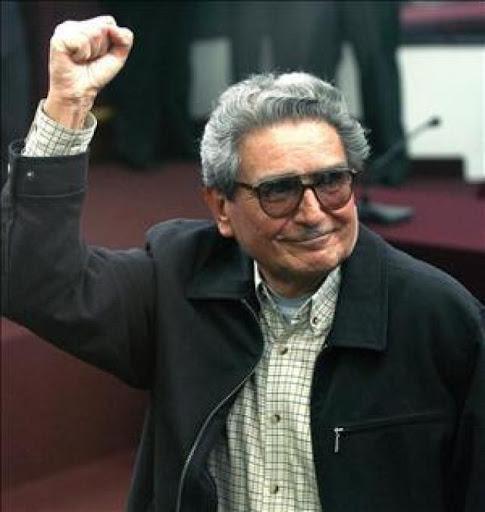
Indigenous peoples in Peru, and generally throughout Latin American, have long been marginalized, and dealt with as undesirable human beings by most white and mestizo populations.
On May 17, 1980, Guzmán launched “People’s War” to overthrow the Peruvian government. The guerrilla organization’s main goal was “to destroy existing Peruvian political institutions and replace them with a communist peasant revolutionary regime, while resisting any influence coming from other Latin American guerrilla groups like the Tupac Amaru Revolutionary Movement (MRTA), as well as from foreign ideologies.”
SL’s basic strategy was “to use violence to bring down the country’s imperfect democratic institutions, prevent citizens from participating in local government, destroy Peru’s economy, and to thwart government-sponsored programs to provide aid and services to the population.”[6]
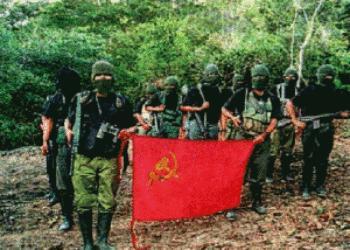
Shining Path established a military school to teach young recruits military tactics and weaponry use. They were successful for a time “because the Lima authorities were beset by organizational instability, corruption, and were ill-prepared to fight the internal war that would foreshadow the deaths of tens of thousands of innocent villagers caught in the middle of the struggle.”
SL based its headquarters in the mountainous areas of Ayacucho and Huanta, and central and south Vilacabamba, site of the last Inca resistance. They launched attacks on agricultural areas in the Upper Huallaga Valley and the southern part of Puno.
“Guzmán played the role of all-powerful military and spiritual leader of his organization; in this sense, Shining Path was organized as a hierarchical cult rather than on a cell-based model.”
Guzmán was influenced by one of Peru’s and Latin America’s most read and admired revolutionary writers and activists, José Carlos Mariátegui. He founded the Peruvian Communist Party. Mariátegui coined the phrase for the PCP’s Marxism, sendero luminoso al futuro (“Marxism-Leninism is the Shining Path to the future”).
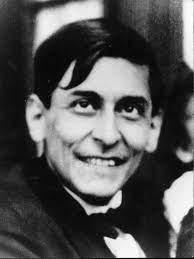
“An avowed self-taught Marxist, he insisted that a socialist revolution should evolve organically in Latin America based on local conditions and practices, not the result of mechanically applying a European formula … based on traditional forms of collectivism as practiced by the Indians. In a famous phrase, Mariátegui stated, ‘the communitarianism of the Incas cannot be denied or disparaged for having evolved under an autocratic regime.’”
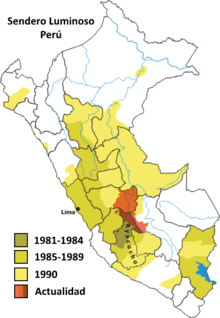
Having lived in Italy, and married to an Italian, he watched fascism’s rise and concluded that “fascism was the price that a society in crisis paid for the failures of the left.”
Mariátegui’s ideas, as well as Che Guevara’s, who learned from him, and Fidel Castro’s, formed the basis for the rise of leftist organizations and governments (the pink tide) in the last two decades. Evo Morales and Hugo Chávez learned from Mariátegui as well.
Similar to the FARC in Colombia and other revolutionary insurgencies, “Shining Path partly funded its operations through ransoms from kidnapping and forced taxes on small businesses and individuals. Shining Path also required Colombian cocaine dealers and buyers operating locally to pay higher than prevailing prices for raw coca in return for protection and the opportunity to buy weapons from them.”
In the early years, SL targeted local authorities and police, and later the military once they began to target SL. Guzmán also began attacking well-to-do peasants, and those in the “Rondas.” “The Rondas Campesinas (“rural” or “peasant” patrols) were formed in the 1970s.
The role and range of the ronderos expanded in the ’80s as part of the fight against terrorism.” They can now be found throughout Peru with varying influence. Ley Nº 27908 – Ley de rondas campesinas. (ecolex.org) [7]
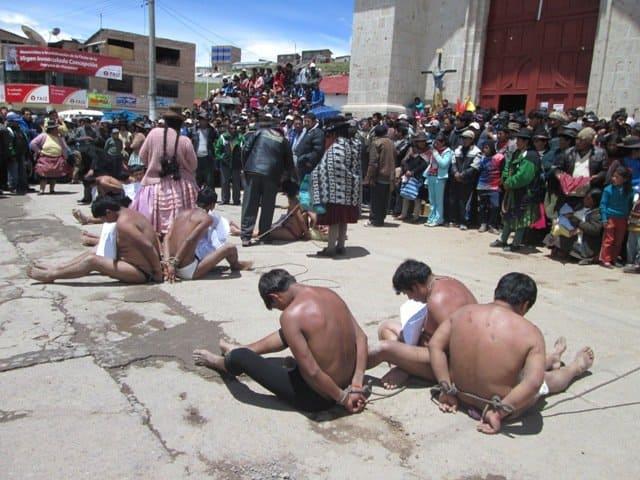
In 1983, in response to the brutal murder by a Ronda group of one of Shining Path’s commanders, Guzmán ordered retaliation. To set an example, guerrillas killed between 69 and 80 people in small towns of Huancasancos province—18 children, the youngest six months old, 11 women, some pregnant, eight seniors between 50 and 70 years old. They were butchered with machetes and axes, some were shot. Guzmán gave an interview about this to SL newspaper El Diario.
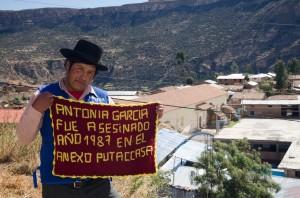
“In the face of reactionary military actions… we responded with a devastating action: Lucanamarca. Neither they nor we have forgotten it, to be sure, because they got an answer that they didn’t imagine possible. More than 80 were annihilated, that is the truth. And we say openly that there were excesses … but everything in life has two aspects. Our task was to deal a devastating blow in order to put them in check, to make them understand that it was not going to be so easy … we checked them and they understood that they were dealing with a different kind of people’s fighters, that we weren’t the same as those they had fought before.”
Neither Mariátegui nor Che would have condoned torturing and massacring people.[8]
During a news conference in Havana, August 6, 1985, Fidel answered reporter questions about Sendero Luminoso. Prensa Latina wrote that Fidel said he had no relationship with them, but maintained that the current crisis in Peru, which had Latin America’s highest poverty rate, caused “instability in the country.”
Fidel said that the great amount of hunger and illiteracy “cannot be resolved with arms but by political measures to eradicate social factors.” Fidel welcomed the new government of Alan García,[9] and hoped he “would have success in that struggle against this tragedy.” The new government could “count on our support in that effort, if it so desires.”
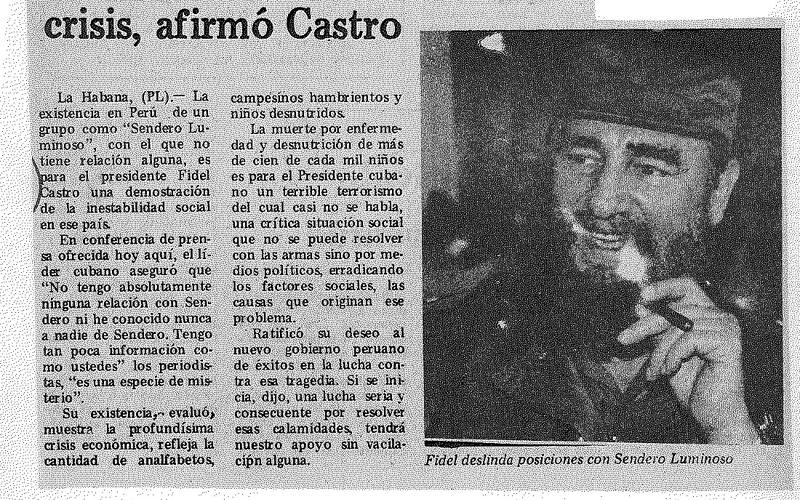
Shining Path matched President Fujimori’s local police, secret police and army brutality against not only armed insurgents but also non-involved peasants in the vast areas under SL control, or partial control. At its height, SL had about 10,000 insurgents.
“After his 1992 auto-coup, Fujimori took control of the press and almost all of the country’s other institutions, promising a return to democracy within a year. This formula enabled him to rule Peru by decree, with a massive number of killings taking place during this period as the result of fierce fighting between Shining Path and Lima’s security forces.
“On September 12, 1992, Abimael Guzmán was captured by local authorities without a drop of blood spilled. This resulted in a major decrease of fatalities and the shrinking of the Shining Path’s armed effectiveness. One of Guzmán’s top lieutenants had been interrogated after being detained and eventually was induced to reveal some of Guzmán’s hiding places. [After Guzmán’s capture] Fujimori displayed him in an outdoor cage so the press could witness this act of public humiliation—simultaneously boasting of his success. Capturing Guzmán meant the destruction of Shining Path’s hierarchy. The group began to disintegrate due to organizational issues and opposition in the ranks.”[10]
Guzmán was tried before a military court whose judges were hooded to prevent their identification. He was sentenced to life at a naval base prison. Eighteen hundred other SL members were imprisoned.
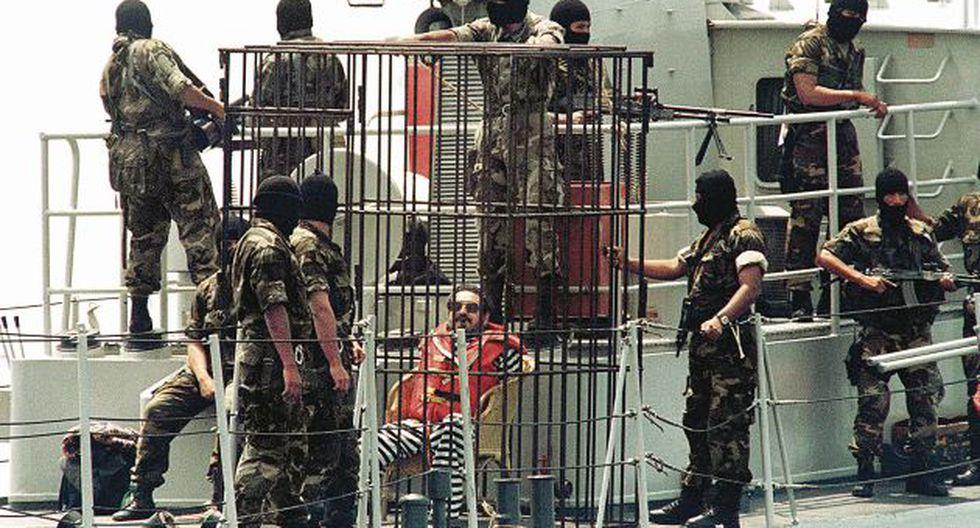
Tupac Amaru Revolutionary Movement
Tupac Amaru Revolutionary Movement (MRTA) was an outgrowth of the Marxist-Leninist Socialist Revolutionary Party, in 1982. It is named after the last Inca leader who resisted Spanish colonial rule. Tupac was captured and hung in 1572.
One of Peru’s most admired poet, José María Aguedas (1911-1969), raised by Spanish and Quechua speakers, wrote of the indigenous lives. One of his most renowned poems is of the life and struggles of the great Incan leader as the peoples’ father.
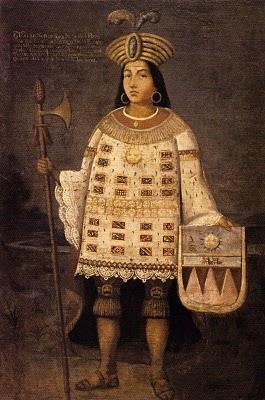
Tupac Amaru [Source: wikipedia.org] 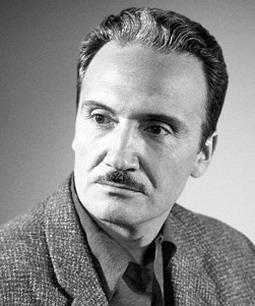
José María Aguedas [Source: goodreads.com]
MRTA, like Shining Path, viewed Cuba’s revolution as a model but did not adhere to Maoist ideology nor did it join SL. During the 1980s and ’90s, MRTA engaged in guerrilla warfare aimed at the Establishment. There were also some armed conflicts between SL and MRTA, which could not establish a base in rural areas against the might of its left adversary.

MRTA’s most ambitious and proclaimed action, and the major cause of its eventual demise, was taking over the Japanese embassy residence. During a party celebrating the Japanese emperor’s birthday on December 17, 1996, 14 members of the guerrilla group, led by co-leader Victor Polay Campos, captured 800 dignitaries (politicians, diplomats, military officers and rich businessmen).
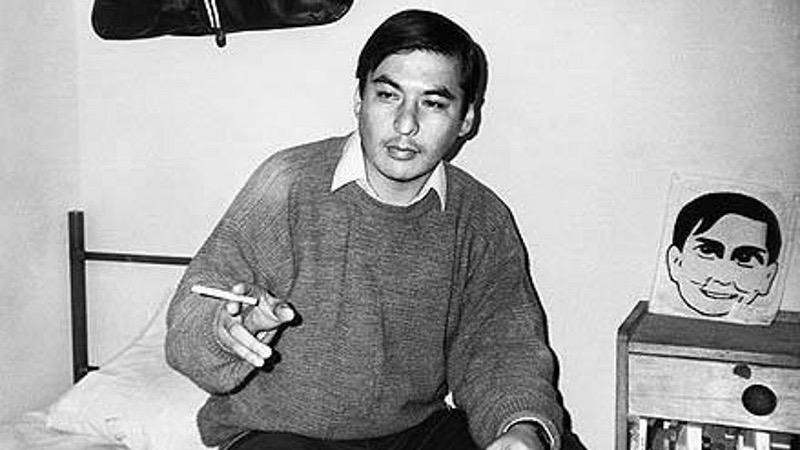
During negotiations, the rebels released all women, and most of the men, keeping only 72 hostages. MRTA sought the release of 450 imprisoned members of its organization.
U.S. military in the area assisted the Peruvian army with various rescue plans. Finally, on April 22, 1997, a 140-man Peruvian army commando team raided the residency. The rebels did not wish to kill hostages. The only casualties were themselves, one hostage and two soldiers. All 14 rebels were killed on Fujimori’s orders, half of them executed.

Truth and Reconciliation Commission
The Truth and Reconciliation Commission (CVR) was established by interim president Valentin Paniagua, in November 2000, following Fujimori’s abdication. Its investigations involved actions by the Shining Path, MRTA and the military-police. The commission was composed of ten men and two women lawyers, professors, priests and a bishop, and one retired general.
When engineer Alejandro Toledo won the election in July 2001, the first Quechua president increased the number of commissioners. Toledo and the party he founded, País Posible (Possible Peru), improved some working conditions, but also catered to the IMF and U.S. economic and foreign policies. Toledo became a friend of President George W. Bush.
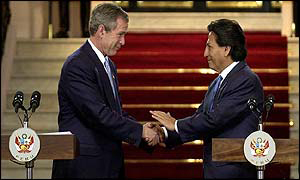
On August 28, 2003, CVR “reported on the estimated 70,000 deaths, assassinations, torture, disappearances, displacement, employment of terrorist methods and other human rights violations executed by the State, Shining Path, and the Túpac Amaru Revolutionary Movement. The report concluded that there is both institutional and individual accountability, as well as identifying racial and cultural factors that became a catalyst for conflict.”
A 2019 study disputed CVR casualty figures, reporting instead “a total of 48,000 killings, substantially lower,” and concluded that “the Peruvian State accounts for a significantly larger share than the Shining Path,” more than the 28% attributed to the military and police reported by CVR.
The CVR investigation was financed by some of the $360 million discovered in foreign accounts, which had been stolen by Fujimori officials.
Alberto Fujimori
Although Fujimori won the July 2000 runoff with a bare majority, irregularities led most of the world’s governments to shun his third swearing-in on July 28. Daily demonstrations took place in front of the presidential palace for many weeks. As a conciliatory gesture, Fujimori appointed former opposition candidate Federico Salas prime minister. Opposition parties in Congress refused to support this move, and former President Toledo led the campaign to have the election annulled.
At this point, a corruption scandal involving Fujimori’s chief of national intelligence security Vladimiro Montesinos took place. Montesinos supervised a death squad, Grupo Colina, which committed many massacres. Montesinos also wiretapped leading politicians and journalists and profited from the drug trade. Montesinos had strong connections with the CIA and was said to have received $10 million from the Agency for his government’s anti-terrorist activities.[11]
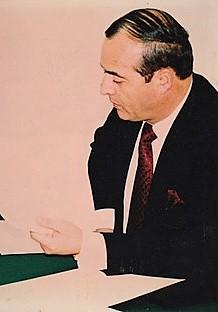
On November 13, Fujimori left Peru for a visit to Brunei to attend the Asia-Pacific Economic Cooperation forum. On November 16, Valentín Paniagua took over as president after the pro-Fujimori leadership lost a vote of confidence.
On November 17, Fujimori traveled from Brunei to Tokyo where he submitted his presidential resignation via fax. Congress refused to accept his resignation, instead voting 62–9 to remove Fujimori from office on the ground that he was “permanently morally disabled.” Japan granted him exile status and citizenship. Where and when Fujimori was born is still a contested issue—either in Japan or Peru.
Wanted in Peru on charges of corruption and human rights abuses, Fujimori maintained a self-imposed exile until his arrest while visiting Chile in November 2005. Fujimori believed conditions in Peru were favorable for him to run for the presidency again despite the fact that his political enemy Toledo was still in power but soon faced an election. Chilean authorities arrested Fujirmori, however, when Peru requested his extradition, which happened on September 22, 2007.
In December 2007, Fujimori was convicted of ordering an illegal search and seizure and was sentenced to six years’ imprisonment. In April 2009, Fujimori was convicted of human rights violations and sentenced to 25 years’ imprisonment for his role in killings and kidnappings by the Grupo Colina death squad. This was the first time that an elected head of state had been extradited to his home country, tried, and convicted of human rights violations.
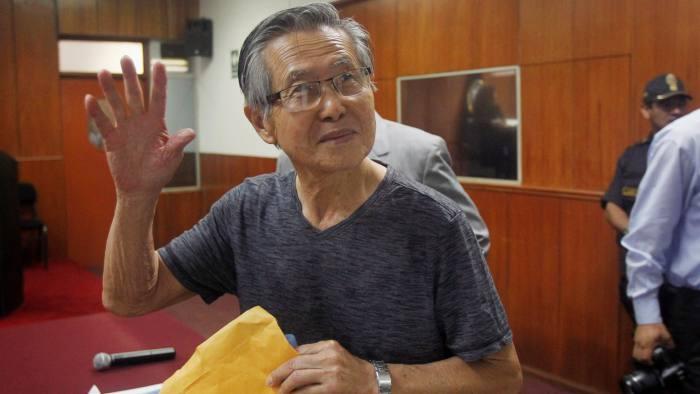
He faced a third trial in July 2009 over allegations that he illegally gave $15 million in state funds to Vladimiro Montesinos, which the disreputable former president admitted. Fujimori admitted guilt in another corruption trial in September. He received another six-year sentence, however, under Peruvian law, all prison sentences run concurrently.
Even though Fujimori has proven to be corrupt and murderous, various polls show that his leadership approval rating fluctuated—once as high as 65%. A key reason is resentment and fear of Sendero Luminoso. An article from La Razon, a Peruvian newspaper, stated in 2003 that “Fujimori is only guilty of one big crime and it is that of having been successful in a country of failed politicians, creators of debt, builders of mirages, and downright opportunistic.”[12]
Role of the United States
A United States Establishment organization, the Council on Foreign Relations, wrote in a 2009 background piece on Shining Path that “Washington pursued a policy of lending money and giving military aid to Peru to help the country’s government wage war against Shining Path. This policy continued even after President Alan García’s administration defaulted on some of its loans, despite a longstanding U.S. policy making a country ineligible for aid if it failed to repay military assistance debt for more than a year.”
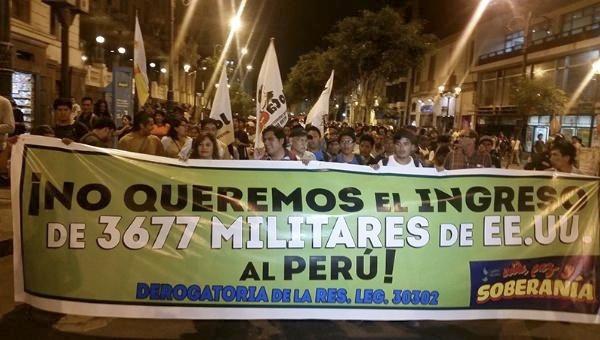
United States domination over Latin America began in 1823 with the “Monroe Doctrine”—related to the concept of “manifest destiny” for the U.S.. In 1846-48, the U.S. warred upon Mexico and stole its northern half, which is now: Texas, New Mexico, Nevada, California, Colorado, Utah and Wyoming. There were hundreds of instances of military intervention over the coming years.
One of the last measures of President Obama’s reign was a military presence in Peru. In December 2016, President Kuczynski let the U.S. build a military base in the Amazon. The U.S. Southern Command, the Amazonas regional government and the company Partenon Contratistas signed off on a plan allegedly to assist the country during “natural catastrophes,” under cover of the Centre for Operations for Regional Emergency.

“The United States no longer needs to launch wars to conquer and assert its hegemony on Latin American soil; now the region is brought to heel by far subtler means: through initiatives of covert militarization. In addition to its war against terrorism, Washington is using the fight against drug trafficking and its alleged commitment to respecting human rights as covers for intermeddling in the internal affairs of other countries … Peru is a vital platform to enable the United States to consolidate its plan to dominate the whole of South America,” wrote Ariel Noyola Rodríguez.
“Military cooperation between Washington and Lima is not restricted to setting up military bases; the United States has followed up by fully integrating itself into the [Peruvian] security and defense apparatus. Pursuant to authorization by Peru’s Ministry of Defense, special operation units of the Joint Command of Armed Forces, the Command of Intelligence and Joint Special Operations and the Special Unit, VRAEM, received training from U.S. forces between May and September 2016. …In tandem, the Peruvian forces have led countless joint military exercises with the United States.”[13]

Joe Biden’s administration has not publicly taken a position on the current election, but Peruvian activists understand that the “neighbor in the north” is backing Keiko Fujimori quietly. The National Endowment for Democracy, which works to subvert leftist governments worldwide, spent nearly $650,000 in Peru in 2020.
A potentially ominous precedent was established in Ecuador in the April 2021 election where the U.S. government backed a spoiler candidate of indigenous background, Yaku Pèrez, who told his supporters—who included eco-anarchists and other environmentalists—to vote blank.
This deprived leftist Andrés Arauz—who had been leading in the polls—of key votes, and threw the election to Guillermo Lasso, a millionaire banker and former Coca-Cola director who will uphold U.S. military bases and economic interests in Peru.[14]
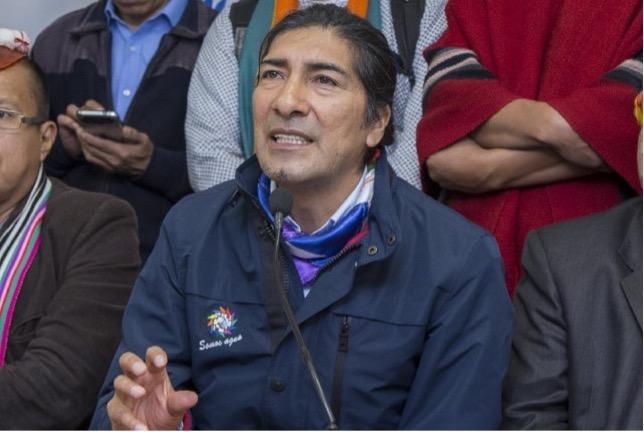
The U.S. in league with the Peruvian business elite may try and pull the same dirty tricks in Peru. So far, Biden’s public rhetoric has focused little on Latin America other than to encourage Mexico to prevent migrants from entering the U.S., and to continue sanctions against Venezuela because of the “tyrant” Nicolás Maduro’s rule. Pedro Castillo seeks an end to U.S. domination over its “backyard.” He also proposes to expel the Drug Enforcement Administration, and to end the phony “war against drugs,” which marks him as a target for Washington’s covert manipulations.
Current Election Campaign
At Pedro Castillo’s request, he and Keiko Fujimori held an improvised debate on May Day, the working class’s historic victory day, in the plaza of his hometown and where he teaches, Choto. The northern city of some 50,000 was lively with mainly Castillo supporters. Ronderos were present with their creature whips. Female and male spokespersons told local media that because the area, and Peru generally, has a “weak rule of law,” Ronderos are necessary to “maintain security and discipline,” and prevent thievery.
The debate was intense but not vicious. Fujimori led off by chiding Castillo for trying to run away from debating her on neutral territory. He replied, “I do not run from fujimorismo. Who ran away was your father,” referring to his 2000 escape to Japan.
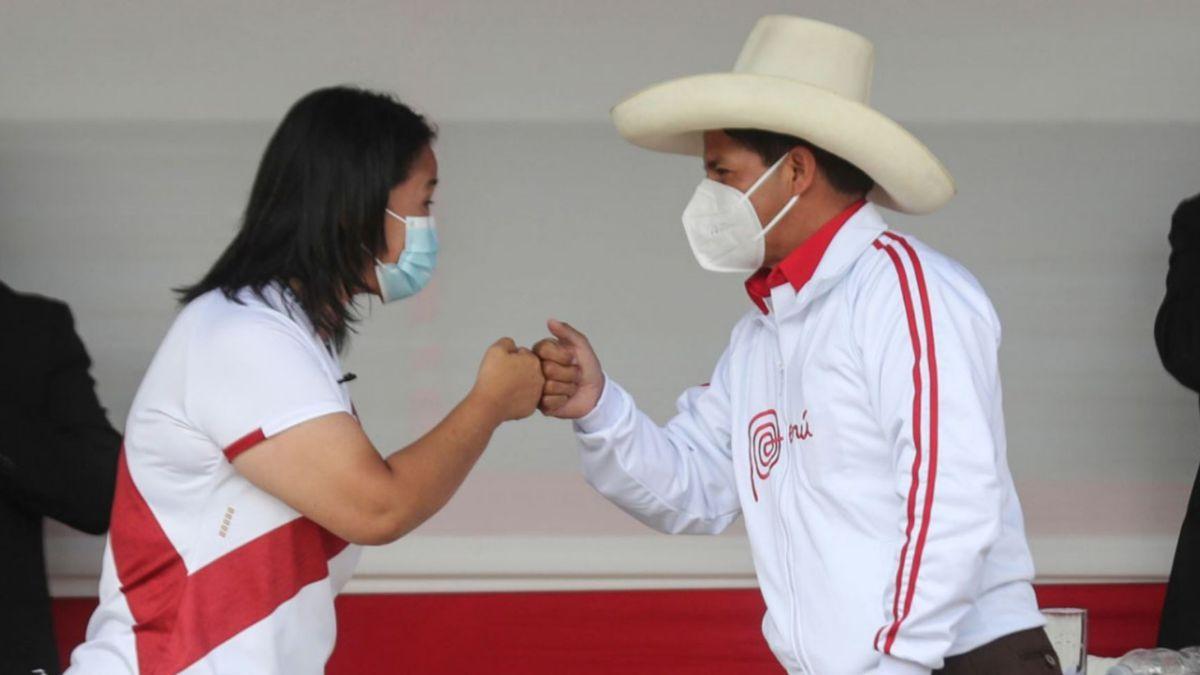
The key issues discussed concerned corruption, corona, the economy and crime. Castillo criticized the neo-liberal economy for not providing decent working and living conditions for the majority, for the lack of adequate medical care generally and during the corona pandemic specifically. His party will propose a new constitution that would make tax-supported medical care for all a right.
Fujimori defended the current private health care system and the neo-liberal economy.
Castillo’s government would revise transnational contracts that exploit natural resources. The state, he said, would take 30% of the profits and protect the earth as much as possible. Fujimori said the current recession is not due to neo-liberal policies but to “lack of management.”
Regarding social insecurity and crime, Fujimori proposed greater punishments, while her opponent proposed more and better education.
Keiko Fujimori did not directly accuse Pedro Castillo of being a terrorist, but her party, the other conservative-rightest parties and the mass media, do. Castillo replied to them: “We are not terrorists, communists or chavistas,” referring to Hugo Chávez.
The Free Peru party and Pedro Castillo say they are receiving death threats, according to Peruvian media. The mass media and right-wing politicians, are constantly claiming that he supports Shining Path. There is no evidence of actual support for what it did, but he may be one of many people who think some prisoners should receive amnesty or a pardon after so many decades in prison.
Extreme rightest Rafael López Aliaga contends that Pedro Castillo “shall not become president,” as he would never allow elections again. Castillo would be another “authoritarian Maduro” and run Peru like Venezuela and Cuba. Much of the mainstream media, like La Razón, regularly quote right wingers, who maintain that Castillo is with Sendero Luminoso and its imprisoned leader, Guzmán.
The Center-Liberal Popular Action party decided not to take a position on whom to support.
On May 5, Castillo’s Peru Libre and Mendoza’s Junta agreed to cooperate. Veronica Mendoza said: “What is at stake is not only Castillo Terrones’ victory, but of putting a brake on mafia and authoritarianism,” and she asserted that she does not want a government with “people who are able to sabotage even vaccines.”
Castillo later stated that the controversial educational curriculum gender matter is not an issue in his campaign and that the future Congress should decide on that. On May 1, the average of eight polls gave Castillo a 43% chance of winning over Keiko Fujimori with 35%. The remainder say they will vote blank or are undecided.
Two days following the debate, Fujimori had caught up with 37% to her rival’s 38%, an average of 12 polls. On May 12, Castillo was ahead 47% to 32%, and on May 25-27, 40% to 33.6% with 26.4 either voting blank (about half those) or don’t know, meaning the results are uncertain.

-
”Peru: Left vs. Far Right—Dramatic Choice in Presidential Election,” The Analysis.news, April 15, 2021, https://theanalysis.news/interviews/peru-left-vs-far-right-dramatic-choice-in-presidential-election/ ↑
-
MOVADEF – Movimiento por Amnistía y Derechos Fundamentales and
Elecciones 2021: Pedro Castillo, el dirigente del Conare – Movadef que encabeza el boca de urna de las elecciones | POLITICA | PERU21
The Movement for Amnesty and Fundamental Rights was founded in 2009 to agitate for the release of political prisoners, including members of Shining Path. Its leader, Abimael Guzmán, has been in prison since 1992. In 2012, MOVADEF gathered 350,000 signatures on an amnesty petition. The secret police maintain that Castillo is associated with MOVADEF and mainstream media reports as such. Supporting amnesty for these political prisoners does not necessarily mean one supported crimes of murdering peasants not involved in warfare. ↑ -
”Peru: Left vs. Far Right—Dramatic Choice in Presidential Election,” The Analysis.news, April 15, 2021, https://theanalysis.news/interviews/peru-left-vs-far-right-dramatic-choice-in-presidential-election/ ↑
-
”Peru: Left vs. Far Right—Dramatic Choice in Presidential Election,” The Analysis.news, April 15, 2021, https://theanalysis.news/interviews/peru-left-vs-far-right-dramatic-choice-in-presidential-election/ ↑
-
“The Rise and Fall of Shining Path,” Council on Hemispheric Affairs, May 6, 2008, https://www.coha.org/the-rise-and-fall-of-shining-path/ ↑
-
Ibid, Shining Path of Peru, ed. David Scott Palmer (New York: St. Martin’s Press, 1992). ↑
-
Rondas Campesinas were legally recognized by the 2003 Law no. 27908, “as an autonomous and democratic rural and indigenous communities, assist in conflict resolution and perform functions of extrajudicial conciliation under the Constitution and the Law.”
Rondas were probably inspired by what U.S. invaders established in Vietnam, the Strategic Hamlets. U.S. soldiers, like most Peruvian soldiers, did not speak the native language. U.S. soldiers came to see all rural Vietnamese, like white/mestizo Peruvian soldiers see rural Quechua and other original peoples, as the same. The National Liberation Front quickly garnered wide popular support, especially in rural areas, so the U.S.-backed South Vietnamese government established “pacification programs” in March 1962. Strategic Hamlet Program – The Vietnam War ↑ -
Nor do I or CAM editors. ↑
-
Alan García was yet another president caught up in corruption with the Odebrecht scandal. As he was about to be arrested for that on April 17, 2017, he shot himself and died. I wrote and translated for Prensa Latina between 1993 and 1996 in Havana. ↑
-
“The Rise and Fall of Shining Path,” Council on Hemispheric Affairs, May 6, 2008, https://www.coha.org/the-rise-and-fall-of-shining-path/ ↑
-
See Abderrahman Beggar, “The Path of State Terror in Peru,” in When States Kill: Latin America, the U.S., and Technologies of Terror, ed. Cecilia Menjívar and Nestor Rodríguez (Austin: University of Texas Press, 2005)
; “The Betrayal of Peru’s Democracy: Montesinos as Fujimori’s Svengali,” Covert Action Quarterly, Summer 1994. -
https://en.wikipedia.org/wiki/Alberto_Fujimori#Legacy ↑
-
Ariel Noyola Rodriguez, “South America Under threat: U.S. to Set Up a New Military Base in Peru,” Global Research, January 26, 2017, https://www.globalresearch.ca/south-america-under-threat-u-s-to-set-up-a-new-military-base-in-peru/5571023 ↑
- Ron Ridenour, “Millionaire Banker and Former Coca Cola Director with Ties to Far-Right Wing Opus Dei Catholic Sect Defeats Socialist Candidate in Ecuador,” CovertAction Magazine, April 12, 2021, Ron Ridenour, ”Ecuador’s New Socialist Party Set to Win Elections Despite U.S. Intervention and Deceptive Identity Politics,” CovertAction Magazine, April 10, 2021. ↑
CovertAction Magazine is made possible by subscriptions, orders and donations from readers like you.
Blow the Whistle on U.S. Imperialism
Click the whistle and donate
When you donate to CovertAction Magazine, you are supporting investigative journalism. Your contributions go directly to supporting the development, production, editing, and dissemination of the Magazine.
CovertAction Magazine does not receive corporate or government sponsorship. Yet, we hold a steadfast commitment to providing compensation for writers, editorial and technical support. Your support helps facilitate this compensation as well as increase the caliber of this work.
Please make a donation by clicking on the donate logo above and enter the amount and your credit or debit card information.
CovertAction Institute, Inc. (CAI) is a 501(c)(3) non-profit organization and your gift is tax-deductible for federal income purposes. CAI’s tax-exempt ID number is 87-2461683.
We sincerely thank you for your support.
Disclaimer: The contents of this article are the sole responsibility of the author(s). CovertAction Institute, Inc. (CAI), including its Board of Directors (BD), Editorial Board (EB), Advisory Board (AB), staff, volunteers and its projects (including CovertAction Magazine) are not responsible for any inaccurate or incorrect statement in this article. This article also does not necessarily represent the views the BD, the EB, the AB, staff, volunteers, or any members of its projects.
Differing viewpoints: CAM publishes articles with differing viewpoints in an effort to nurture vibrant debate and thoughtful critical analysis. Feel free to comment on the articles in the comment section and/or send your letters to the Editors, which we will publish in the Letters column.
Copyrighted Material: This web site may contain copyrighted material the use of which has not always been specifically authorized by the copyright owner. As a not-for-profit charitable organization incorporated in the State of New York, we are making such material available in an effort to advance the understanding of humanity’s problems and hopefully to help find solutions for those problems. We believe this constitutes a ‘fair use’ of any such copyrighted material as provided for in section 107 of the US Copyright Law. You can read more about ‘fair use’ and US Copyright Law at the Legal Information Institute of Cornell Law School.
Republishing: CovertAction Magazine (CAM) grants permission to cross-post CAM articles on not-for-profit community internet sites as long as the source is acknowledged together with a hyperlink to the original CovertAction Magazine article. Also, kindly let us know at info@CovertActionMagazine.com. For publication of CAM articles in print or other forms including commercial internet sites, contact: info@CovertActionMagazine.com.
By using this site, you agree to these terms above.
About the Author
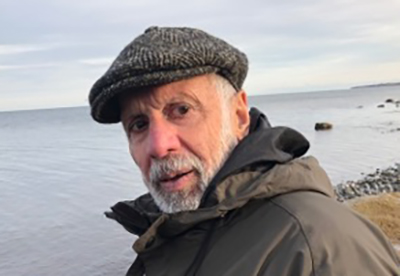
Ron Ridenour is a U.S.-born author and journalist, anti-war and civil rights activist since 1961. After joining the U.S. Air Force at 17, he saw the inner workings of U.S. imperialism first hand and resigned. In the 1980s and 1990’s he worked with the Nicaraguan government and on Cuban national media.
He now lives in Denmark and, in addition to writing a dozen books, has served as a special correspondent and freelance investigative journalist for many publications in the U.S. and several Latin American and European countries—among them: The Morning Star, New Statesman, The Guardian (U.S. and England), Playboy, Liberation News Service, Pacific News Service, Coast Magazine, Qui, Skeptic, Seven Days, and Pacifica Radio.
CAM co-founder Philip Agee wrote commentaries to two of his dozen books: Yankee Sandinistas: Interviews with North Americans Living and Working in the New Nicaragua, and Backfire: CIA’s Biggest Burn. See also: The Russian Peace Threat: Pentagon on Alert and Winding Brook Stories at Amazon and Lulu. Other work can be found at ronridenour.com.
Ron can be reached at ronrorama@gmail.com.

